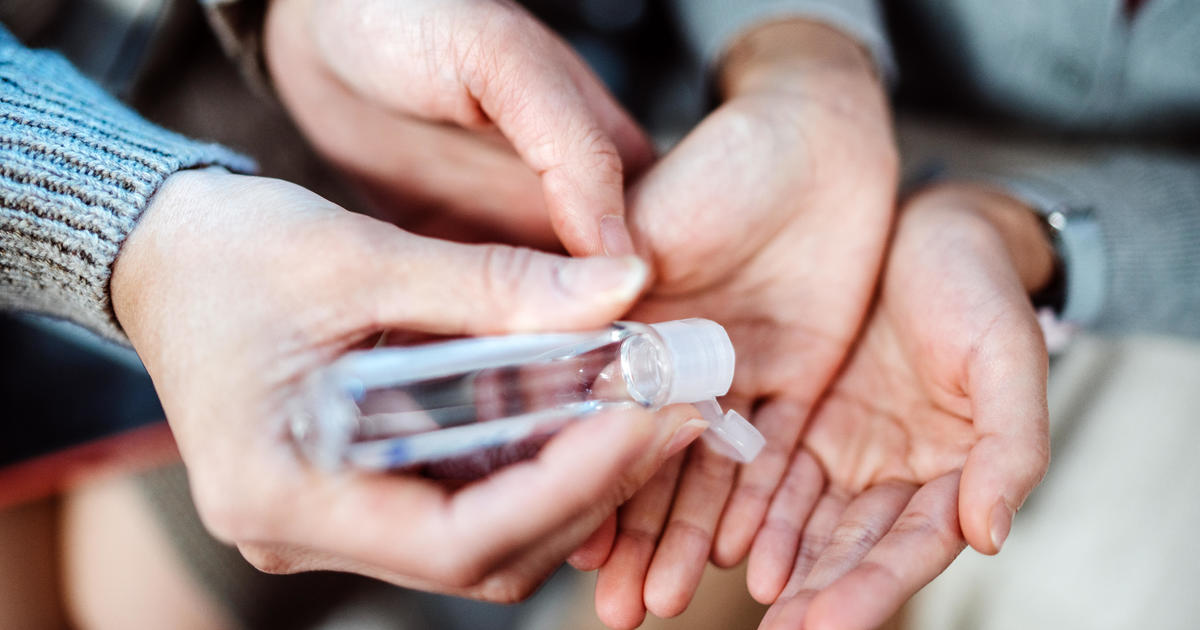Although public health experts say hand sanitizer is generally an adequate substitute for handwashing to protect yourself against COVID-19, the growing use of disinfectant products is leading to another problem: A surge in accidental poisoning, especially among children.
Through the third week of July, there was a 59% spike this year in calls to one of the 55 poison control centers around the U.S. due to various incidents involving sanitizer compared to the same period last year, according to data from the National Poison Data System. Of those 18,625 cases, nearly 12,000 involved kids age 5 and younger.
Sanitizers can have different risks. In June, the Food and Drug Administration started warning consumers that some brands of sanitizer, mostly manufactured in Mexico, were contaminated with methanol. Better known as wood alcohol, the substance can be harmful if absorbed through the skin and deadly if swallowed, with children especially vulnerable. Since then, the agency has warned of nearly 90 potentially toxic sanitizers.
“Although people using these products on their hands are at risk for methanol poisoning, young children who ingest these products and adolescents and adults who drink these products as an alcohol [ethanol] substitute are most at risk,” FDA Commissioner Stephen Hahn said in a statement Monday.
But even before the agency started warning about methanol in sanitizers and announcing recalls of products sold nationwide at retailers including Walmart and Target, the FDA identified another potential danger is some new products flooding the market. Namely, a slew of manufacturers were making the products without denatured alcohol, a substance required to make sanitizers taste bitter and unappetizing to children.
Every year, thousands of consumers call poison control centers because someone has unintentionally ingested hand sanitizer. But in March, as concerns about the coronavirus were growing, those calls surged 80% from a year ago. That caught the attention of FDA regulators, who noted that most of the nearly 3,300 cases that month involved young children.
Cleaning methods to kill coronavirus
07:09
In response to the rash of poisoning incidents, the FDA stepped up its testing of products, including shipments made by some of the 1,500 manufacturers that jumped into the hand-sanitizing business amid widespread shortages.
The result? A stream of consumer warnings, starting with an FDA alert in late April that some hand sanitizers lacked a key ingredient: the denatured alcohol that would make their products unappealing to drink, particularly for kids.
“Unfortunately, ingestion of only a small amount of hand sanitizer may be potentially lethal in a young child,” Hahn cautioned in April.
GoJo, the maker of Purell, one of the best-known brands of hand sanitizer, issued a statement in early July noting it uses a denaturant in its product to “inhibit misuse.”
Ben Kremer, president of a school and office-supplies company called SCHOOLSin, in Blue Ash, Ohio, can attest to the concerns around hand sanitizers. His company sells sanitizers from two suppliers, one in the U.S., the other in Mexico, and both running facilities inspected by the FDA.
“The problem with this pandemic — just like Clorox wipes and other hard-to-find stuff — is you have bad actors showing up using crappy ingredients,” said Kremer, whose company started selling sanitizer and personal protective equipment as demand grew for the products.
Permanent blindness and deaths
The FDA notes that incidents in which children and adults ingested hand sanitizer products contaminated with methanol led to hospitalizations, blindness and death.
“Methanol is an acutely toxic substance,” William Banner, an Oklahoma pediatrician and board president of the American Association of Poison Control Centers (AAPCC), told CBS MoneyWatch. Unlike some substances that require sustained exposure to to cause serious harm, wood alcohol has a long history of severe toxicity that led to the term “blind drunk” due to potential damage to the optic nerve, he added.
In late June, state health officials in New Mexico reported three deaths from methanol poisoning, another three people who were critically injured and a seventh who had suffered permanent blindness. According to the New Mexico Department of Health, all seven were believed to have consumed hand sanitizer containing methanol.
The Arizona Republic this month also reported that since May, four people have died and 26 people were hospitalized after ingesting hand sanitizer containing methanol.
People exposed to hand sanitizer containing methanol and who are experiencing symptoms should seek immediate medical treatment, according to the AAPCC.
The FDA offers the following tips when it comes to buying hand sanitizers:
- Check your hand sanitizer products to see if they are on the FDA’s list — if so, dispose of them immediately. Most sanitizers found to contain methanol do not list it as an ingredient on the label, so it’s important to check the agency’s list to see if the name of the company or product is included.
- Hand sanitizer should be stored out of reach, and sight, of children. For kids under age 6, sanitizer should be used with adult supervision. If your child ingests sanitizer, call a poison control facility or a medical professional immediately.There are currently no drugs, including hand sanitizer, approved by the FDA to prevent or treat COVID-19. The best way to prevent the spread of infections and decrease the risk of getting sick is by washing your hands with plain soap and water. If soap and water are not available, CDC recommends consumers use an alcohol-based hand sanitizer that contains at least 60% alcohol.
